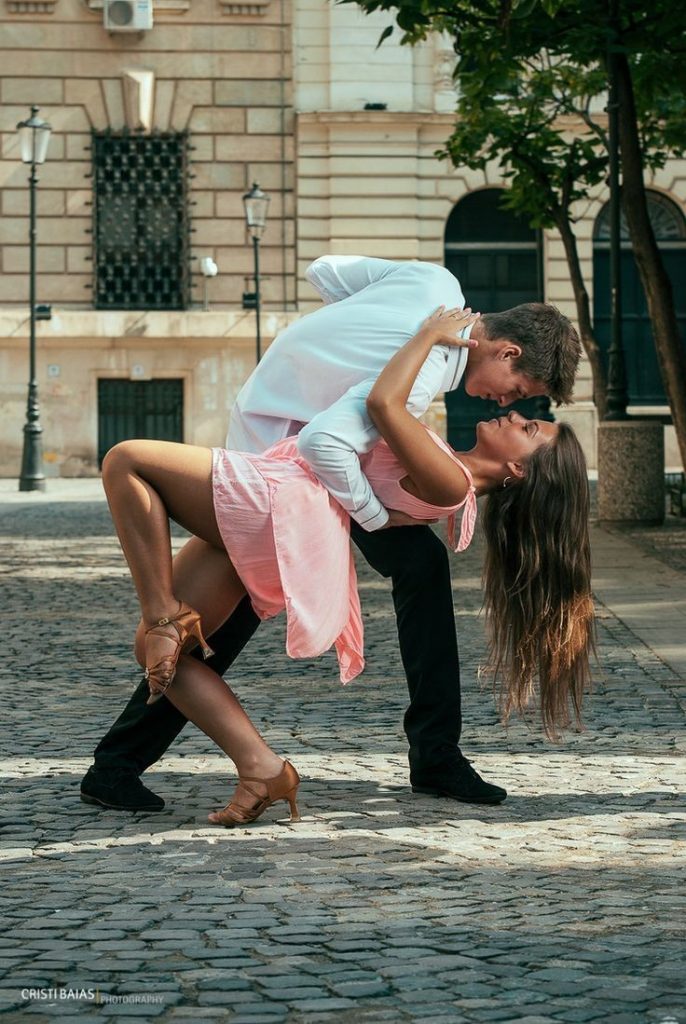Dance, is the movement of the body rhythmically, usually to music and within a given space, to express an idea or emotion, release energy, or simply take.
Dance is a performing art form, which consists of sequences of movement. These sequences can be pre-planned (choreographed), or improvised (made up as the dancer is dancing).
The value of dance is that is it can have both aesthetic (what it looks like) and symbolic (how it makes you feel) merit to the audience.
Dance can be categorized and described by:
- The historical period in which it was created.
- Where the dance was created.
- The types of movements or choreography in the dance
It’s believed that the oldest proof of the existence of dance is from paintings that were found in caves in India, created 9000 years ago. These paintings show various scenes of communal drinking, religious rites, hunting, childbirth, burials, and, of course, dancing.
By looking at the tomb paintings that survived Egyptian times, it was believed that priests used musical instruments and dancers to show important events, stories of gods, and cosmic patterns of moving stars and sun.
In Ancient Greece, dance was often enjoyed by the public, most notably just before the Olympic Games, as early as the 8th century B.C!
The dance developed further over the following centuries, and it became an activity for everyone, not just to signal a ritual or event. A painting discovered from 1400 B.C. showed people dancing to entertain each other, supported by musicians.
This kind of entertainment continued to be refined, and at the beginning of the Renaissance, ballet became a popular form of dance for the wealthy to enjoy. During this time, new forms of music were created, and they brought about a change in fashion and dance styles. The tendency to jump and skip in dance became popular after the French Revolution and this was when the famous waltz was created.
The waltz inspired the creation of many complicated two-person ‘ballroom dances’ that children will recognize today. These paved the way for more modern dances in the 20th century such as the foxtrot, tango, and swing dances.
Dancing can be a way to stay fit for people of all ages, shapes, and sizes. It has a wide range of physical and mental benefits including:
Improving condition of your heart and lungs, increasing muscular strength, endurance, and motor fitness, increasing aerobic fitness, improving muscle tone and strength, weight management, stronger bones and reducing the risk of osteoporosis, better coordination, agility, and flexibility, improving balance and spatial awareness, increasing physical confidence, improving mental functioning, improving general and psychological well being, greater self-confidence and self-esteem, and better social skills.
There are many different types of dance genres in today’s society, with more being developed all the time. One thing is for sure, new types of dance always draw upon features of dance genres that have come before – whether they use a particular type of music or beat, have strict choreography, or are open to interpretation. Popular styles of dancing include:
- Ballet: Ballet was developed during the Italian Renaissance and is a choreographed dance set to classical music and focuses on strength, technique, and flexibility.
- Ballroom dancing: This involves several partner-dancing styles such as the waltz, swing, foxtrot, rumba, and tango. It is a popular form of competitive dance with competitions held all around the world.
- Belly dancing: Originating in the Middle East, this dance style is a fun way to exercise.
- Hip-hop: Performed mostly to hip-hop music, this urban dance style can involve breaking, popping, locking, and freestyling. Hip Hop or Street dance dates back to the late 1970s and draws upon the fashion and music of America at the time. Street dance can be a competitive dance, with groups challenging each other to a dance battle.
- Jazz: A high-energy dance style involving kicks, leaps, and turns to the beat of the music. Jazz dancing is known for its improvisational and dramatic body movements.
- Pole dancing: Has become increasingly popular as a form of exercise. It involves sensual dancing with a vertical pole and requires muscle endurance, coordination, and upper- and lower-body strength.
- Salsa: Involving a mixture of the Caribbean, Latin American, and African influences, Salsa is usually a partner dance and emphasizes rhythms and sensuality.
- Square-dancing: A type of folk dancing where four couples dance in a square pattern, moving around each other and changing partners.
- Tap dancing: Focuses on timing and beats. The name originates from the tapping sounds made when the small metal plates on the dancer’s shoes touch the ground. Tap dancing is often performed as part of musical theater and focuses on timing, with dancers often performing in unison
- Contemporary dance: Was created in the mid-twentieth century. It draws on classical, modern, and jazz dance styles, and is the most popular form of dance studied today.
- Irish dancing: Requires precision and excellent timing as all dancers perform intricate footwork together – often in a line
- Folk dancing: Is used all around the world to convey emotion and traditional stories or legends.
What is creative dance?
Creative Dance is a contemporary form of dance that combines movement and artistic expression, without the need for specific training. Typically, creative dance focuses on the development of motor skills and emotional expression, as opposed to the aesthetics-based focus of dance in more traditional structured settings.
This is why creative dance is explored with children when they are young – it allows for people of all abilities to take part and succeed.
Creative dance is a combination of all different styles of dance, and children can create their dance personalities and choreography.
Creative dance is important for children to learn because it has been shown to have a positive effect on social and cognitive functioning. This helps improve children’s confidence and academic performance.
Another benefit of creative dance for children is that it helps them become more especially aware. They’ll improve their gross motor skills, and find they can move with control and balance more easily.
Children will find that they can express themselves through creative dance, which will be particularly beneficial to those who struggle to communicate clearly or confidently.
Within creative dance, performers will consider space, time, force, and body. They can then develop these elements into different speeds, shapes, rhythms, and directions.
General tips for dancing
If you are thinking of taking up dancing, suggestions include:
- See your doctor for a check-up if you have a medical condition, are overweight, are over 40 years of age, or are unfit.
- Wear layers of clothing that you can take off as your body warms up.
- Do warm-up stretches or activities before you begin a dance session.
- Drink plenty of water before, during, and after dancing.
- Make sure you rest between dance sessions.
- Don’t push yourself too far or too fast, especially if you are a beginner.
- Wear professionally fitted shoes appropriate to your style of dance.
- Check with your dance instructor that you are holding the correct form.
- Sit and watch new dance moves first. Learning new moves increases your risk of injury, especially if you are already tired.
- Perform regular leg-strengthening exercises.
- Move as fluidly and gracefully as you can.
- Cool down after a dance session, including stretching.
There are many forms of dance, from ballroom to barn dancing and disco to Morris dancing. Dance has always been a part of human culture, rituals, and celebrations. Today, most dancing is about recreation and self-expression, although it can also be done as a competitive activity. Dancing is an enjoyable way to be more physically active and stay fit. So, put dancing in your daily program, and if you forget you can use the Habitomic app in this regard.

